South Carolina’s art and history provide the perfect touchstones for any visit. Entwined like the strips of the palmetto leaves that make up beautiful sweetgrass baskets, artisans of today reach through the generations to bring their visions to life, tapping into traditions influenced by the still-prominent Gullah and Geechee cultures in the state’s Lowcountry.
South Carolina’s vibrant history is showcased throughout the state, with attractions like the striking International African American Museum in Charleston, the Columbia Museum of Art in the Capital City, and the Catawba Cultural Center in the Upstate. From the mountains to the sea, South Carolina’s landscape is adorned with museums and artisan centers that weave a rich tapestry of narratives, honoring the heritage of South Carolina’s earliest inhabitants while highlighting the artistic journey passed down through generations.
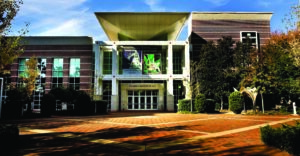
The Catawba Indians’ pottery techniques date back more than 4,000 years, a practice called “the oldest traditional form of art east of the Mississippi.” The Catawbas polish their work using river rocks rather than firing them in a kiln. Learn more at the Catawba Cultural Center in Rock Hill, or visit the “SC6: Six South Carolina Innovators in Clay” exhibit at the Columbia Museum of Art.
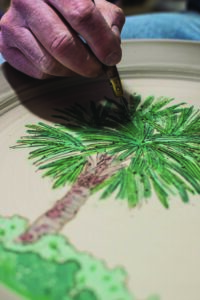
Many claysmiths still call South Carolina home. In Pendleton, be sure to stop by Rob Gentry Pottery. Gentry remembers watching the “magic” of clay being spun at an early age, and today he crafts pieces unique to each individual who enters his studio.
On the opposite side of the state, just off Interstate 95, you’ll find Southern face jugs – which stem from an African tradition – and more at the South Carolina Artisan Center in Walterboro. This collection spans the centuries, from indigenous folk art to modern crafts and two-dimensional art.
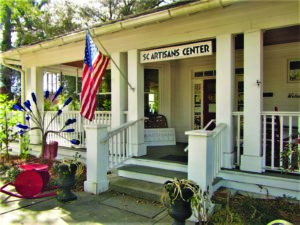 The South Carolina Artisan Center is housed in a restored eight-room Victorian cottage built in the late 1800s, and its collection features works by more than 300 South Carolina master artisans selected in a two-stage juried process. The center features pottery, paintings, jewelry, quilts, vases and, among other items, sweetgrass baskets made by well-known Gullah artists.
The South Carolina Artisan Center is housed in a restored eight-room Victorian cottage built in the late 1800s, and its collection features works by more than 300 South Carolina master artisans selected in a two-stage juried process. The center features pottery, paintings, jewelry, quilts, vases and, among other items, sweetgrass baskets made by well-known Gullah artists.
The Gullah Geechee who live in South Carolina’s Lowcountry and Sea Islands have preserved more of their heritage than any other African-American community in the United States. The Gullah Geechee Cultural Heritage Corridor, a 12,000-square-mile federal National Heritage Area that stretches from North Carolina to Florida, honors that tradition.
Build your trip around a visit to the International African American Museum, which opened this summer in Charleston. Built on Gadsden’s Wharf, where countless enslaved Africans were brought into the United States, the museum showcases the pivotal roles African Americans played in shaping U.S. history and society. 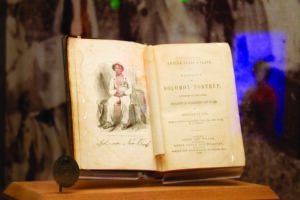 The stories of struggle and resilience, tragedy and triumph paint a picture of the African-American experience, which is supplemented with immersive displays, interactive installations and a wide range of artifacts. Be sure to visit the African Ancestors Memorial Garden, a quiet and reflective space beneath the building. Designed to honor enslaved Africans who passed through Gadsden’s Wharf, the garden’s multifaceted design links Charleston to a network of global sites connected by the legacy of inhumanity. The garden is home to the Tide Tribute, a series of relief figures that represent men, women and children who were inhumanely kept in ships anchored in nearby Charleston Harbor.
The stories of struggle and resilience, tragedy and triumph paint a picture of the African-American experience, which is supplemented with immersive displays, interactive installations and a wide range of artifacts. Be sure to visit the African Ancestors Memorial Garden, a quiet and reflective space beneath the building. Designed to honor enslaved Africans who passed through Gadsden’s Wharf, the garden’s multifaceted design links Charleston to a network of global sites connected by the legacy of inhumanity. The garden is home to the Tide Tribute, a series of relief figures that represent men, women and children who were inhumanely kept in ships anchored in nearby Charleston Harbor.
From there, to the islands: The two-hour Gullah Heritage Tour on Hilton Head Island is brought to life by fourth- and fifth-generation Gullah guides, whose ancestors survived for generations in relative isolation by passing down their traditions and lifestyle. This tour includes several historic sites, including Mitchelville, the first freedman’s village in the United States.
On Daufuskie Island, renowned Gullah chef Sallie Ann Robinson leads a bus tour to a dozen historic landmarks, including Mary Fields Elementary School, where acclaimed author Pat Conroy taught in the 1960s. Robinson was one of the schoolchildren Conroy taught and was featured in his book The Water is Wide.
 The Penn Center on St. Helena Island, a National Historic Landmark, is a former school for freed slaves. Dr. Martin Luther King Jr. and the Southern Christian Leadership Conference used it as a meeting place and retreat in the 1960s. Today, the center offers cultural performances, workshops, walking and island tours, and historical presentations.
The Penn Center on St. Helena Island, a National Historic Landmark, is a former school for freed slaves. Dr. Martin Luther King Jr. and the Southern Christian Leadership Conference used it as a meeting place and retreat in the 1960s. Today, the center offers cultural performances, workshops, walking and island tours, and historical presentations.
McLeod Plantation, once part of a 1,700-acre Sea Island cotton plantation, tells of the story of plantation life before and after the Civil War. Several 45-minute interpretative tours are included with admission; topics range from cotton cultivation to the transition to freedom for generations of African Americans who called the plantation home.
The Gullah Museum in Georgetown, founded by a Gullah quilt artist and scholar, Vermelle “Bunny” Smith Rodrigues, who has lectured extensively on the African Diaspora, reveals how slavery served as the backbone of the rice and indigo industries in South Carolina’s Lowcountry.
Once a career training center and hub of Charleston’s African-American community, the Avery Research Center for African-American History and Culture develops new exhibits each year from its extensive art and manuscript collections. Now part of the College of Charleston, the former Avery Normal Institute also hosts temporary exhibits featuring prominent and emerging artists who document the history, traditions, legacies, and influence of African Americans. (Advance registration is required for self-guided tours.)
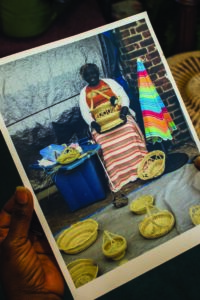
Board a bus for a two-hour Gullah Tour of Charleston, where you will visit Emanuel African Methodist Episcopal Church, the original Catfish Row neighborhood featured in “Porgy and Bess,” and a hiding spot along the Underground Railroad.
Brookgreen Gardens in Murrells Inlet offers an audio tour of a quarter-mile Lowcountry Trail that overlooks a restored rice field of the former Brookgreen Plantation.
Built in 1859, the Old Slave Mart located between Chalmers and Queen streets in downtown Charleston is the last surviving slave auction gallery in South Carolina. Informative displays, photographs and posters shed light on this horrific chapter of U.S. history.
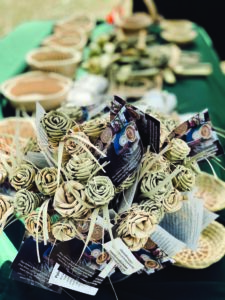
Throughout your Lowcountry and Sea Islands adventure you are likely to spot basket stands. Sweetgrass basketweaving is a sacred art that the Gullah share only amongst their families, passing the tradition down through the generations. These baskets aren’t just art; they are a piece of a family’s history.
You may also find artisans selling Palmetto Roses. The Palmetto Rose originally was a homemade keepsake given to a family member going off to fight in the Civil War. If you run into Corey Alson at the Charleston City Market, he will show you how to make one yourself.
No trip to South Carolina is complete without the one thing we all make with our hands: food. The Gullah Geechee Corridor is packed with restaurants offering cuisine rooted in centuries-old traditions. Buckshot’s Restaurant in McClellanville and The Gullah Grub on St. Helena Island are among the most popular.
There is always something more to discover in South Carolina. The basket, bowl, or canvas you discover on your trip becomes a part of your home, your family, your heritage – one small snapshot of time that you can hand down to, and possibly inspire, the next generation.

